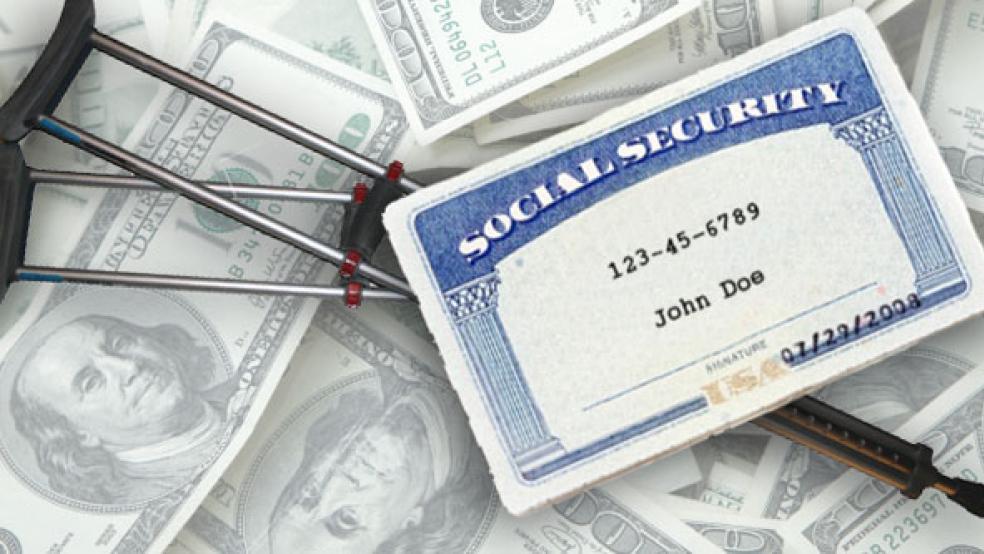Chained CPI may be on the hottest buzzword among policy wonks right now – but for millions of others across the country it might as well be the name of a new punk-rock band.
Time to clear it up.
The Consumer Price Index, or CPI, is an inflation measure calculated by the government and used by almost every federal retirement, disability and income-support program to pay annual cost-of-living adjustments (or COLA). The Labor Dept. calls CPI “the average change over time in the prices paid by urban consumers for a market basket of consumer goods and services.” The formula tracks the price change of basic goods and services across 200 categories, including food, housing, clothing and medical expenses.

Based on the CPI, dozens of tax elements – from the standard deduction, to limits on contributions to 401K plans, to the earned income and child tax credits – are adjusted annually.
This is where the lower CPI adjustment, known as chained CPI, comes in. The government’s standard CPI inflation-adjustment formula does not account for consumer behavior. But by assuming that people switch to cheaper alternatives when the price of some goods rises significantly – such as buying chicken instead of beef, as one example – chained CPI reduces inflation adjustments. Only chained CPI accounts for people adjusting their purchases in response to price changes. As result, chained CPI grows about .3 percent slower than the current rate.
The switch would generate significant new revenue by slowing the rate at which income thresholds for tax brackets rise. Over time, that would move taxpayers into higher tax brackets faster than they would have gotten there under the current formula.
Moving to chained CPI – which House Republicans are proposing and which President Obama has also backed, to the chagrin of some Democrats and liberal groups – would reduce the costs of a host of federal programs, including Medicare and Social Security, saving some $217 billion over a decade. It’s a tweak to the formula for calculating inflation – essentially an arcane budget maneuver with broad plusses and minuses.
Proponents say it serves as a more accurate gauge of inflation than the current CPI-W index the government uses for Social Security and that it builds significant savings over time. Opponents, however, say chained CPI fails to account for a rise in health care costs, which have far outweighed inflation in recent years. They also charge that switching to chained CPI would cause a reduction in Social Security benefits that would hurt seniors and regressively increase income taxes.
Since President Obama seeks to prevent older and infirm Americans from taking any blows in the current battle over a fiscal cliff deal, his offer proposes to exclude Supplemental Security Income, or SSI, from chained CPI and to provide a bump-up in benefits for retirees who reach age 85, according to Democrats.
White House Press Secretary Jay Carney referred to chained CPI on Tuesday as a “technical fix” to better calculate inflation. But Eric Kingston, co-director of Social Security Works, a labor-backed coalition of 270 national and local organizations representing 50 million people, said earlier this year, “There’s no justification for [chained CPI]. To sell this as a technical adjustment to the American people would be a lie. If you [project] out 20 years, you’re looking at a 7.7 percent cut in benefit levels.”
Over a decade, switching to chained CPI would save $112 billion in Social Security, $33 billion in other federal retirement programs, and $23 billion from other programs with eligibility or benefit levels pegged to the cost of living, according to a paper from the Moment of Truth Project (the successor to Simpson-Bowles) in 2011. As for taxes, the nonpartisan Tax Policy Center calculates that most Americans would pay or lose a little more than $100 a year.
Chained CPI will be a familiar term to followers of the Bowles-Simpson deficit reduction package, which last year called for using chained CPI to calculate future Social Security benefits. The Rivlin-Domenici deficit reduction plan was behind it as well, provided there were caveats for the oldest and most vulnerable Americans. The switch to chained CPI was also endorsed by the Bipartisan Policy Center’s Deficit Reduction Task Force, the conservative Heritage Foundation, the liberal Center for Budget and Policy Priorities and the liberal Center for American Progress.
But the debate will rage on. While House Democratic leader Nancy Pelosi has said she’s confident her caucus would ultimately back chained CPI if President Obama asks them to – while some progressives and liberal lawmakers are furious with Obama for proposing the change.
(Note: Inflation can be measured in a number of ways. The tax code uses CPI-U, or Consumer Price Index – Urban, which measures prices for consumers in urban areas, to adjust the income cutoffs for different tax brackets. Social Security uses CPI-W, which is like CPI-U but only counts prices paid by urban wage-earners, not all consumers.)




